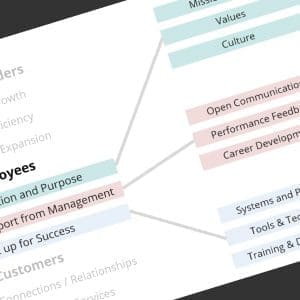Can Social Media technologies and practices translate well into your organization? Think differently about these four behaviors inside your teams - the right changes will drive the benefits.
Like many, I’ve been hearing plenty of breathless commentary about how the next generation of business software will incorporate social media aspects. I’m only cynical because of the hype volume; I’ve seen KM, intranet, and collaboration projects fail – but also succeed, some with great success and real business benefit delivered.
However, I cringe a little inside when I hear about most projects or product offerings – back to the Magic Bullet antipattern where all you have to do is install the Right Product, and your challenges with collaboration at a distance, or your search for the innovation grail, will automatically go away once you’ve finished the training class.
Recently, I had a great conversation with another project team looking at applying social networking concepts inside the firewall. The most interesting chunk of the conversation resulted in a short list of Behavior Changes that need to be part of the plan when introducing Social Media to the enterprise:
- How People Receive Information – has to change from It Comes To Me [via my Inbox] to I Have To Go Find It. Auto notifications (email alerts) can help bridge the gap, but the organization will need to come to grips with the idea that their Inbox is no longer their primary window to the world. Note that we live in a world of technology that is competing for our attention in this regard – for example, ERP and other platforms that are adding workflow capabilities – still following the notion that the way to their minds is through their Inbox.
- Creating “Find”able content – This is a New and Different Skill – most people do NOT have it, and to make social collaboration effective, the organization will sooner or later have to “invest” (time and nurturing) in this. Some of this can arise through “natural selection”, of a sort; either everyone is a content author and must develop better communication skills OR an information market economy takes over, and folks will need to want to be found (or, those that want to be found will be found).
- If one of the objectives is to foster an environment of possibilities – where people can find content they are looking for and innovation / opportunities happen magically due to the Social Environment – then Security Must Be Open by Default. A “Walled Garden” of content (where security is default High, and any/all access must be Granted) will immediately and irrevocably get in the way of innovation. This shifts a huge burden on Communities of Practice (CoP) Leaders: they will want to “goose” the sharing – actively encourage traffic in ideas, to get traffic / participation; at the same time, they will need to be aware of security requirements and police the content and train participants. This leads to a classic intranet best practice: in most corporations, Corporate Communications or Human Resources has overall ownership of the intranet [social sharing space], and so will need to define expectations for sharing and “good behavior” – and train and remind folks constantly.
- That last point actually begs the question – you will need to lay out Social Media Responsible Use Guidelines for internet (public) and intranet social media; many candidate solutions are cloud-based, and if you want to use sites like Yammer, Jive, or Chatter, you may be asked to change those web filters and open up access to Facebook, LinkedIn, and others.
18 September, 2012






Comments (1)
Great post! It is a tough transition to make… but it’s happening whether we like it or not. My experience is that the proactive companies will pave the way and prove the need, as with all prior tech shifts.
Right now the hype abounds and the mainstream is basically groping around for ‘how to use social media’. Your suggestions are good.
I think point 3 is the KEY to a self-serve access to thought leadership and new ideas.
Thanks for the topic.